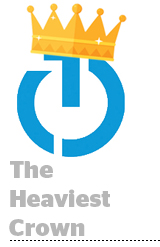 The Trade Desk captured $121 million in revenue during Q1, up 41% from $85.7 million in the same period last year, the company reported on Thursday. Its profitability in the quarter rose to $10.2 million, from $9.1 million in 2018.
The Trade Desk captured $121 million in revenue during Q1, up 41% from $85.7 million in the same period last year, the company reported on Thursday. Its profitability in the quarter rose to $10.2 million, from $9.1 million in 2018.
It’s been more than two years since The Trade Desk IPO’d, and strong revenue gains are now old hat. The company has also maintained 95% client retention rates since before it went public, solidifying its position as the runaway leader among independent demand-side platforms.
The Trade Desk has become a “compelling alternative” to walled garden platforms, founder and CEO Jeff Green told investors.
The company laid out some of its plans to continue differentiating itself from the ad platform giants, as well as from smaller rivals in the ad tech ecosystem.
Vendor pare down
On both the buy side and sell side, ad tech companies have seen their margins whittled down by brands and publishers trimming their roster of partners and demanding lower fees.
This trend has been a boon to The Trade Desk, though, Green said.
On the sell-side, premium publishers like The New York Times are keeping their header integrations with The Trade Desk specifically because its unified ID solution assists with match rates (and hence yield). Management claims the solution is used in more than half of all header bidding deals.
The Trade Desk is “close to checkmate” on its unified ID product becoming a common currency for digital advertising, Green said.
Green said The Trade Desk is acquisitive right now and looking for ways to spend its capital. For instance, he said the company has evaluated Sizmek’s assets in the wake of that company’s bankruptcy filing.
There are more “selective M&A opportunities” now, he said, where the company can replicate its approach with Adbrain, a cross-device graph the company acquired in 2017 for an undisclosed, and likely relatively low, price.
Omni-media approach
Much of The Trade Desk’s growth prospects come from new or emerging media channels.
The big one is TV.
About 2.7% of TV budgets will be spent programmatically, Green said, but that number could be close to 100% before long.
The Trade Desk’s connected TV spend tripled year over year, though the company doesn’t break out revenue by channel. And it’s developing metrics better suited for TV buyers, like on-target percentage, which benchmarks the percentage of campaign ads that are reaching a specific audience, like women or people younger than 35.
Television is slower to become fully programmatic because broadcasters and buyers have large ad sales teams and processes in place, Green said. Newer mediums like streaming audio and podcasting are tiny compared to TV, but Green said their digital roots and API-based ad opportunities provide opportunities for ad tech.
Spotify and Hulu are the two “tea leaf” companies to watch for signs of how the audio landscape will shift toward programmatic, Green said.
Browser Impact
Green also commented on upcoming privacy changes to Google’s Chrome browser.
Many expected Chrome would adopt a policy similar to Safari’s Intelligent Tracking Prevention, which automatically blocks most third-party tracking and ad targeting. The actual Chrome policy update, announced on Tuesday, is more innocuous, giving users more options to restrict cookies but not launching default cookie-blocking standards.
Green noted Google faces higher regulatory scrutiny in how it could change Chrome, if those changes wiped out ad tech rivals.
And he offered this tidbit:
“When I spoke to Google yesterday, I asked if more was coming or of this is the bulk of (the changes to Chrome),” Green said. “And they said this is it.”
This post was syndicated from Ad Exchanger.


More Stories
NZ Gardens Trust grows its board
The 8 New Sports Leagues Worth Watching in 2025
Finalists announced for 51st PRINZ Awards